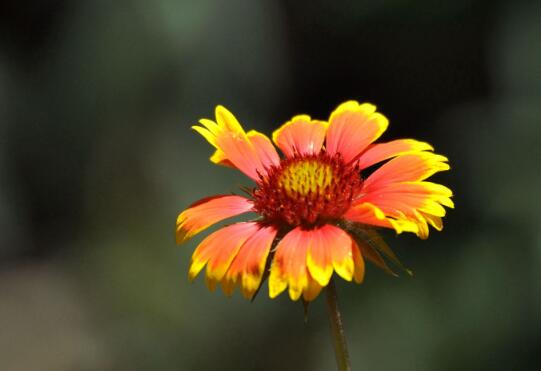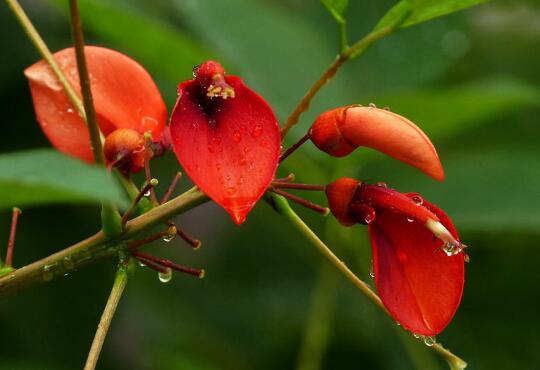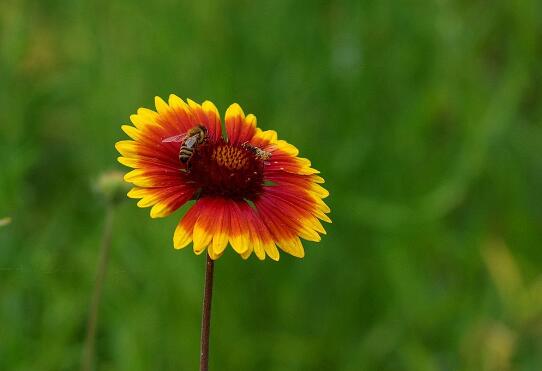How to reproduce Chrysanthemum morifolium? how to reproduce Chrysanthemum morifolium by sowing
Chrysanthemum morifolium is a kind of flower plant native to tropical America, which was introduced to China and can be seen in many parts of our country. As more and more people breed it everywhere, people are more concerned about its reproduction. How to reproduce chrysanthemum? What are the breeding methods of chrysanthemum? Next, the editor will take you to learn about it.
1. How to reproduce, sow / cut chrysanthemum

When it comes to how to reproduce chrysanthemum, in fact, it is mainly divided into two methods: sowing reproduction and cutting propagation. Sowing reproduction is generally carried out in summer, while cutting propagation is more appropriate in spring and autumn. As for how to operate these two propagation methods, there is a detailed introduction below, let's take a look.
Second, the reproduction mode of Chrysanthemum morifolium.
Sowing and reproduction
Seed prompting: before we sow and reproduce the chrysanthemum, we first need to urge its seeds. We can soak the harvested seeds in warm hot water for about 3-10 hours. When the seeds begin to absorb water and expand, we can take them out and sow them, which can improve the germination rate of the seeds.
Sowing method: in the way of reproduction of Chrysanthemum morifolium, sowing and reproduction is a commonly used method. First of all, we should apply an appropriate amount of base fertilizer to the basin soil before sowing, and then sow the seeds evenly on the soil surface. After sowing, we can cover the soil with 1-2cm and then water it. It is best to use the soaking pot method when watering, because the seeds of Chrysanthemum morifolium are relatively small, and it is easy to wash them away if they are watered directly.
Cuttage propagation
Cuttage selection: before the cuttage propagation of Chrysanthemum morifolium, we need to choose the appropriate cuttings, which is a very important step. We had better choose branches that are relatively robust and disease-free as cuttings, so that the survival rate will be very high. If you choose branches that look very small and delicate, then you can basically declare that the cutting failed, and the survival rate will not be very high.
Cutting method: in the propagation mode of Chrysanthemum morifolium, the operation of cutting propagation is relatively simple. Before cutting, we can first use chopsticks to cut a hole in the basin soil, and then insert the cuttings into it. This operation can avoid damage to cuttings, which is very practical. After the completion of cutting, we should also pay attention to light management, the stronger the light, the higher the temperature of the cuttings, the more water will be consumed, which is not conducive to the survival of cuttings.
Subsequent management
After we have successfully propagated in accordance with the above methods, we can carry out daily maintenance, and there are also many areas that need to be paid attention to, such as watering, fertilization and so on. If we do not know how to raise them, you can refer to the article on the breeding methods of Chrysanthemum morifolium, in which there is detailed teaching.
How does Chrysanthemum morifolium reproduce? The Propagation Mode of Chrysanthemum morifolium
The cultivation technique of Chrysanthemum morifolium is very simple and easy to use, because it is a kind of ornamental flower with strong adaptability. The flowering and fruiting period of Chrysanthemum morifolium is from July to August, but it will blossom from May to October, and once it is planted as a flower bed or landscape, it can be planted for many years, and the maintenance cost is not high. So how can Chrysanthemum reproduce to make it grow faster and better? Next, the editor will take you to understand.
The Propagation Mode of Chrysanthemum morifolium
The persistent root Chrysanthemum morifolium is mainly propagated by sowing, dividing plants or cutting, and the production is mainly sowing and propagation.
Sowing and reproduction
Suitable for mass propagation, spring sowing or autumn sowing, sowing substrate can choose peat or vermiculite. The seeds of Chrysanthemum morifolium with persistent roots are larger, and the weight of 1000 seeds is 2.326g. The seeds are sown in the seedling bed, covered with fine sand 2 ~ 3mm, keep the substrate moist, and the suitable temperature for germination is 22 ℃ ~ 25 ℃. It can germinate 10 ~ 14 days after sowing. The germination rate of seed sowing is very high, up to more than 95%.
Ramet propagation
Most of them are carried out in the spring and autumn season, digging up robust 2-3-year-old plants, removing dead leaves and dead roots, dividing the plants into several clumps with fibrous roots from the base, planting them in fertile sandy loam with good drainage, properly shading and paying attention to drainage, they can survive in 5-10 days.
Cuttage propagation
Using branch propagation, the middle and upper part of the plant was selected to grow robust and tender during the vigorous growth period, cut at the internodes, the cuttings were 8 ~ 10cm long, the basal leaves were removed, the upper leaves were properly removed, dipped in 1000-fold diluted rooting powder for about 10 seconds, inserted into the wet sand or vermiculite substrate, inserted into the wet sand or vermiculite substrate, about 3cm, shade and moisturizing after cutting, rooting in 7 ~ 10 days.
The above gives you a detailed introduction to the reproduction of Chrysanthemum morifolium, which can be used for reference by friends who plant it. I hope it will be helpful to all of you.
Cultivation and management technology of persistent-rooted Chrysanthemum morifolium, also known as Chrysanthemum morifolium and Chrysanthemum morifolium, is a kind of Compositae, belonging to perennial grass flowers, one of which is an excellent horticultural variety called 'Arizona Sunshine'. The growth cycle of Chrysanthemum morifolium is short, which takes only 105 days from sowing to flowering; the plant is low and compact, the number of flowers is large, and the flowering period is long.
I. Propagation methods of Chrysanthemum morifolium
The reproduction of Chrysanthemum morifolium is mainly sowing and reproduction.
1. Sowing seeds
Around April 5, the seeds of Chrysanthemum morifolium were sown in the greenhouse.
Substrate: the soilless formula substrate based on peat was used in the sowing of perennial chrysanthemum, without base fertilizer. Perlite needs to be added when mixing. Perlite should be completely soaked with water before stirring. Mix peat and perlite at 1:1, then stir well with water, and then fill the seedling plate.
The persistent-rooted Chrysanthemum morifolium is generally sown in a seedling plate of 60x25x5 centimeters. When filling, first lay a layer of ceramsite in the seedling plate, which has large ceramsite particles and good air permeability, which is conducive to drainage. First, spread part of the matrix in the seedling plate and wipe it flat with a wipe. Then use a sieve to hold some matrix, sift a layer of fine soil on the surface of the seedling plate that has already laid the matrix, and then gently wipe it with a wipe to ensure that the matrix is loose and breathable. After installing the substrate, gently move the seedling plate to the seedling bed and spray through the water with a spray gun. Then you can sow seeds directly on the seedling tray.
Sowing: this is the seed of Chrysanthemum. The sowing rate is 500 to 1000 seeds per seedling plate. When sowing, sow the seeds evenly. Spray water immediately after sowing, and then move the seedling tray to the germination chamber to promote germination.
2. Management after sowing
Temperature: after the seedling plate is in the germination room, we should pay attention to control the environment of the germination room. The temperature is best controlled at 20 ℃ 22. You can put a thermometer on the seedling plate to check the temperature of germination at any time. The humidity in the germination room should be kept above 95%.
Lu Bai: 2 days later, the seeds of Chrysanthemum morifolium showed white, that is, the radicle broke through the seed coat. At this time, the persistent root chrysanthemum was moved from the germination room to the large greenhouse for seedling management. 2. seedling management of persistent root Chrysanthemum morifolium.
The main contents are as follows: 1. The management of hole plate seedlings.
When the cotyledons of the perennial chrysanthemum are fully unfolded and the root system of the seedlings grows to about 2 cm, it is necessary to divide the seedlings. 128 acupoints were used to divide the seedlings.
Acupoint disk matrix: the configuration method of acupoint disk matrix of persistent root Tianren chrysanthemum is the same as that of seedling plate. When filling, sprinkle some matrix sporadically at the bottom of the disk, and then fill it fully. Wipe off the excess matrix and gently caress the surface matrix of the acupoint disk.
After filling the hole plate, pour water thoroughly with 1000-mesh sprinkler. At this time, the seedlings can be divided. The seedlings in the seedling plate are divided into 128-hole hole plates, a process commonly known as wiping seedlings. The most suitable depth for smearing seedlings is to make the two cotyledons 2-3mm higher than the soil surface. After wiping the seedlings, pour through the water with a fine spray nozzle. At the initial stage of wiping seedlings, the substrate should be kept moist.
Temperature: as the plant grows up, its resistance increases, and the weather gets warmer, so the temperature control is not particularly strict. The greenhouse needs to open windows for ventilation every day, mainly to reduce the occurrence of indoor diseases and insect pests and to cool down.
Moisture: when one or two true leaves of the persistent root chrysanthemum grow out and the root system grows rapidly, the dry-wet cycle can be carried out, that is, when the substrate is dry but the seedlings have not wilted, the cycle is repeated.
Fertilization: apply fertilizer 3-5 days after wiping the seedlings of Chrysanthemum morifolium, generally using water-soluble compound fertilizer with the ratio of nitrogen, phosphorus and potassium at 20:10:20 and the concentration of 50-100ppm. The best time to apply fertilizer is after each watering, wait for the substrate to dry slightly, and then apply fertilizer. From now on, each time it is watered and fertilized, it continues until it is put on the basin.
2. Upper basin
After about 30-40 days of seedling division, the fourth or fifth true leaves of Chrysanthemum morifolium grow, and the root system of the seedling is full of holes. It can be seen that the root of the seedling taken from the hole plate is a complete soil lump. At this time, the narrow space of the point plate can no longer meet its growth needs and needs to be transplanted into the pot.
Pots: because the persistent root chrysanthemum is still a seedling, the transplanting pot chooses 11X11 centimeter basin.
Matrix: the matrix of perennial chrysanthemum is generally made of grass carbon and perlite. Mix peat and perlite at 2:1, and then add slow-release fertilizer at the rate of 6 grams per kilogram of matrix. The slow-release fertilizer allows the fertilizer to be released with each watering, making it easy to manage. Then add water to wet the matrix and stir evenly.
Transplant into the pot: when going to the pot, fill the substrate fully into the pot, then take out the hole-plate seedlings of the persistent root chrysanthemum, and put the whole seedlings into the dug hole. The most suitable depth for planting seedlings is that the original soil block is the same as the soil surface of the new basin. Water thoroughly as soon as you put it into the basin.
As the seedlings need to adapt to the environmental conditions after potting, it is best not to apply fertilizer within a week, but pay attention to keep the substrate moist.
3. Change the basin
With the increase of temperature, Chrysanthemum morifolium began to enter the rapid growth stage. After about 40 days of potting, the root system of Chrysanthemum morifolium reached the bottom of the pot and needed to be transplanted to an 18-by-18-cm pot.
Matrix: peat, pine needle, garden soil and perlite are needed for the matrix configuration when changing the basin of Chrysanthemum. Mix peat, pine needle, orchard soil and perlite according to the ratio of 4 to 3 and 2 to 1, then add appropriate slow-release fertilizer in the proportion of 6 grams per kilogram of matrix and stir well with water.
Change the basin: when changing the basin, first spread a layer of matrix evenly on the prepared bottom of the basin, then take out the seedling from the original 11 cm basin, put it into the basin, and slowly pour the matrix into the basin along the root of the seedling. The most suitable depth for planting seedlings is to make the matrix just past the rhizome of the original seedling. The filled matrix and the rim of the basin should be 1.5 to 2 centimeters apart for easy watering. Water thoroughly as soon as you put it into the basin. The whole growing season of Chrysanthemum morifolium can be kept in the 18X18 centimeter basin and there is no need to change the pot again.
Moisture: with the arrival of high temperature in summer, the growth rate of Chrysanthemum morifolium will obviously accelerate, and the demand for water will increase correspondingly. In the hot and dry weather, the potted plants of 18cm need to be watered once a day, and the best time to water is before 10: 00 in the morning. If the pot soil is wet but the leaves are wilting, you can spray water properly.
- Prev

How to propagate paulownia flowers, how to reproduce paulownia flowers / sowing propagation / cutting propagation
Paulownia flower is a kind of flower plant with high ornamental value, and it is cultivated in all provinces of our country. with more and more people breeding it, the problems about its reproduction have also caused people's relationship, about how to reproduce paulownia flower. What are the ways of propagation of paulownia flowers? Next, the editor will take you to learn about it.
- Next

When to sow Chrysanthemum morifolium, how to plant Chrysanthemum morifolium seed / disinfect substrate / accelerate seed before planting
In the way of reproduction of Chrysanthemum morifolium, sowing and reproduction is a more commonly used method. This method has been tested by countless people, but it still has a high survival rate, but if we want to sow successfully, we need to pay attention to a lot of points. when will the chrysanthemum be sown? How to plant chrysanthemum seeds?
Related
- Fuxing push coffee new agricultural production and marketing class: lack of small-scale processing plants
- Jujube rice field leisure farm deep ploughing Yilan for five years to create a space for organic food and play
- Nongyu Farm-A trial of organic papaya for brave women with advanced technology
- Four points for attention in the prevention and control of diseases and insect pests of edible fungi
- How to add nutrient solution to Edible Fungi
- Is there any good way to control edible fungus mites?
- Open Inoculation Technology of Edible Fungi
- Is there any clever way to use fertilizer for edible fungus in winter?
- What agents are used to kill the pathogens of edible fungi in the mushroom shed?
- Rapid drying of Edible Fungi

